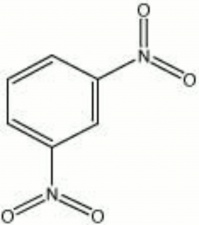Difference between revisions of "Dinitrobenzene, ortho"
Jump to navigation
Jump to search
m (Text replace - "== Authority ==" to "== Sources Checked for Data in Record ==") |
|||
| Line 40: | Line 40: | ||
Fisher Scientific: [https://fscimage.fishersci.com/msds/07316.htm MSDS] | Fisher Scientific: [https://fscimage.fishersci.com/msds/07316.htm MSDS] | ||
| − | == | + | == Sources Checked for Data in Record == |
* ''The Merck Index'', Martha Windholz (ed.), Merck Research Labs, Rahway NJ, 10th edition, 1983 Comment: entry #3273; bp=319 C, mp = 118C, density = 1.57 | * ''The Merck Index'', Martha Windholz (ed.), Merck Research Labs, Rahway NJ, 10th edition, 1983 Comment: entry #3273; bp=319 C, mp = 118C, density = 1.57 | ||
Revision as of 19:47, 30 April 2016
Description
Flat, prismatic crystals. Dinitrobenzene was discovered in 1841 by Sainte Claire Deville. It is prepared from Benzene treated with Sulfuric acid and fuming Nitric acid.
Synonyms and Related Terms
1,3-dinitrobenzene
Other Properties
Soluble in ether, benzene, chloroform, ethyl acetate, and hot alcohol
| Composition | C6H4(NO2)2 |
|---|---|
| CAS | 99-65-0 |
| Melting Point | 118 |
| Density | 1.57 |
| Molecular Weight | mol. wt. = 168.11 |
| Boiling Point | 319 |
Hazards and Safety
Toxic by ingestion. Contact cause burns and irritation.
Fisher Scientific: MSDS
Sources Checked for Data in Record
- The Merck Index, Martha Windholz (ed.), Merck Research Labs, Rahway NJ, 10th edition, 1983 Comment: entry #3273; bp=319 C, mp = 118C, density = 1.57
- MSDS Sheet Comment: Fisher Scientific; bp = 88-90C, mp= 297 C, density 1.36
- F. Crace-Calvert, Dyeing and Calico Printing, Palmer & Howe, London, 1876 Comment: p. 356
